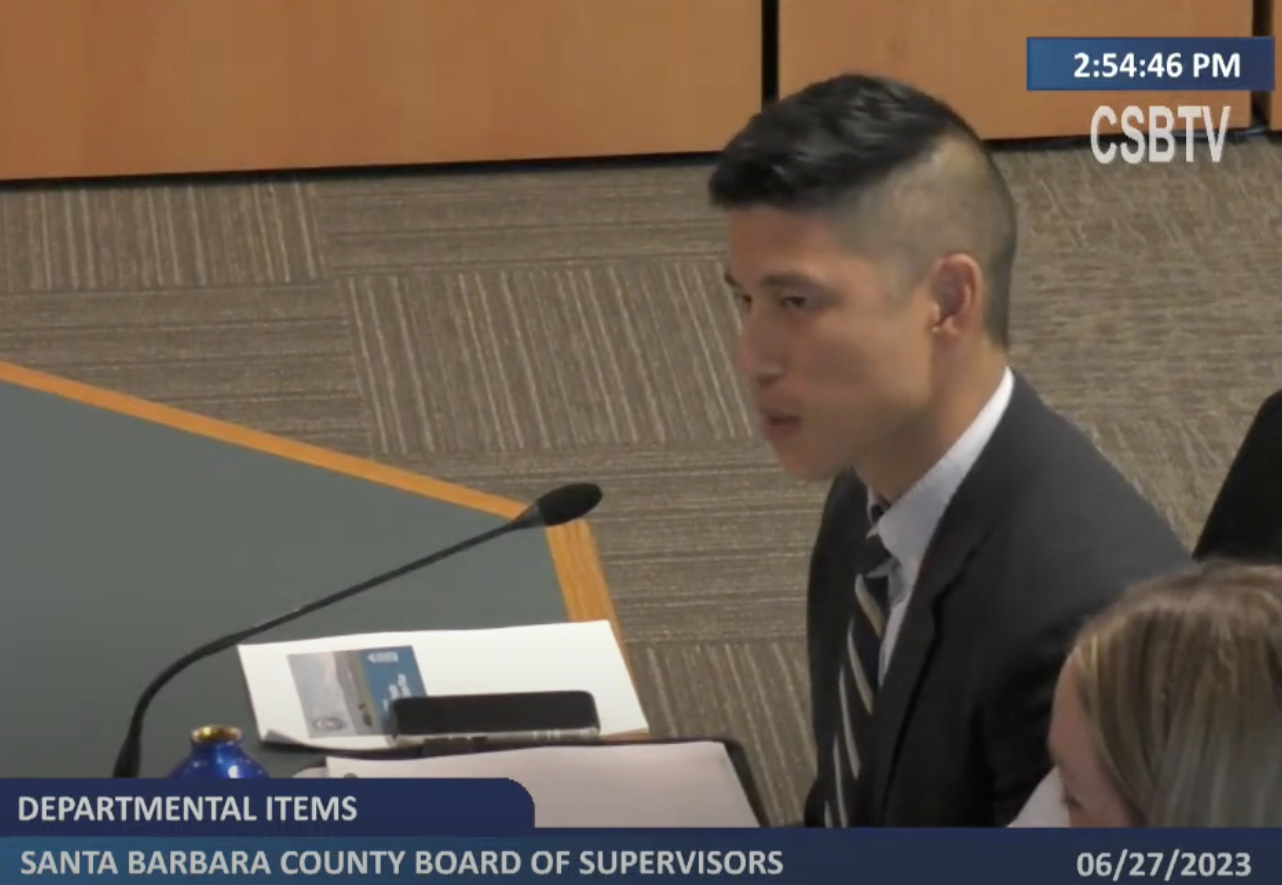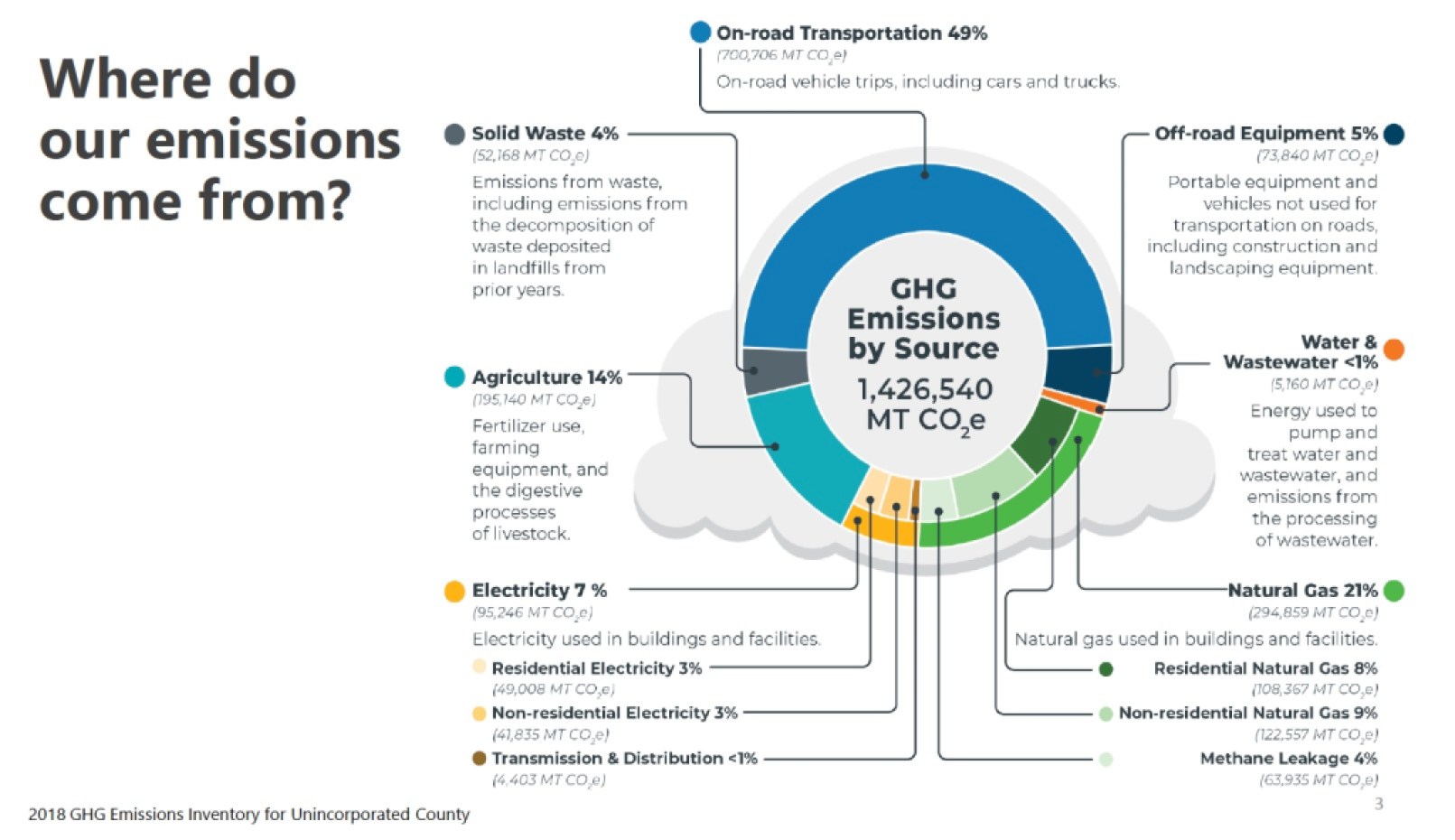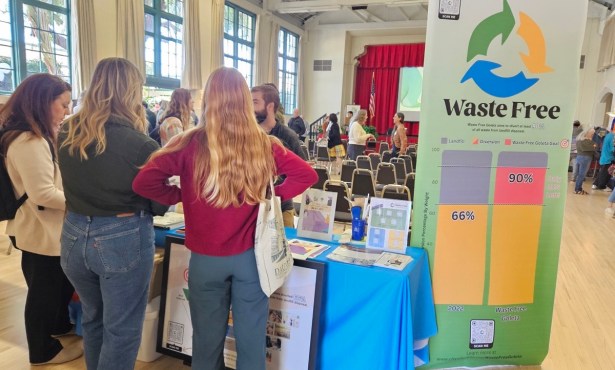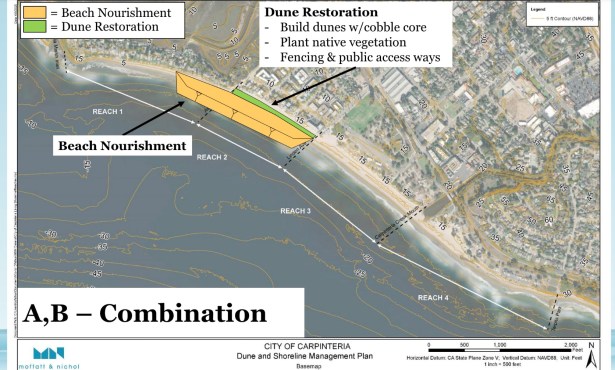Santa Barbara County Sticks with Goal of Cutting Carbon Emissions in Half by 2030
Supervisors Call for Studies on Costs to Government and Consumers Along with Ambitious Climate Action Plan

The 325,000 cars and trucks that Santa Barbarans use daily to get from here to there produce nearly half the greenhouse-gas emissions in the county. Only 3 percent are electric vehicles, or about 10,000 of them, said Garrett Wong — the county’s current goal targets 80,000 by 2030. Wong, the county’s climate program manager, explained these facts and more on Tuesday at the Board of Supervisors meeting on the energy and climate-change goals the county had established in 2015. Should the goals be reduced? he asked, given the inability to meet the targets by 2030. Or get more aggressive? The supervisors responded that the word had yet to reach the public of the many subsidies available for carbon-saving methods, like vehicles and sequestration.
The original Climate Action Plan set a goal of 15 percent below 2007 emission levels, but as technology improved and ever-more-dire facts emerged about climate change, in 2022 the supervisors set the goal to a 50 percent reduction from 2018 emission levels. But the county would be lucky to get to 40 percent reductions by 2030, Wong said. So the county could either lower the emission-reduction target percentage, or get more aggressive with some of the goals, or buy carbon credits. But first, Wong asked that the costs be studied — costs to government, community, and the economy and employment — before proceeding.

The Energy and Climate Action Plan (ECAP) has evolved over time and is actually in a public comment stage until July 27. It looks at housing and transportation, energy, water and trash, the low-carbon economy, and municipal operations. The hurdles to get to a 50 percent reduction in greenhouses gases (GHGs) are large. In addition to vehicle trips puffing out 49 percent of the county’s GHGs, 21 percent comes from natural gas and methane, which contains the carcinogen benzene; agriculture produces 14 percent from fertilizer, cow farts, and farm equipment — Supervisor Bob Nelson said he knew of one electric tractor so far — and 7 percent is due to how electricity is generated, something residents can choose through green, renewable energy programs.
The supervisors were not willing to throw in the towel. “It’s too soon to say we can’t meet the goal,” said Laura Capps. “We’ve never had this amount of federal and state funding for climate change ever, $360 billion.” From her years on the Santa Barbara school board, Capps knew school districts had a lot of land in the unincorporated areas for microgrids — “It seems we haven’t opened those doors yet … to empower our partners.”

Most of the other supervisors agreed that spreading the word about incentives would help. “Where we seem to be falling short is education,” Steve Lavagnino said. “There are so many incentives for electric vehicles … but I don’t see it translating to the average person.” Das Williams added a note of optimism, saying the quantity of electric vehicles sold in the county went from 2.3 percent before this year to 18.4 percent now for zero-emission vehicles.
Electric heat pumps and training installers were on Supervisor Joan Hartmann’s mind, who agreed more information on federal and state subsidies needed to get out. “Electric vehicle chargers, solarizing, battery storage — if we can close that loop to reduce costs, that gets to the equity issue,” she said. “I’m still waiting for that mailer to come. What could I be entitled to?”
“I’m in favor of additional studies so we know what we’re looking at,” said Supervisor Bob Nelson, who was wary of policies that could “cause a lot of heartburn.” Agriculture was a large economic sector for the county, said Nelson, who represents the Lompoc region; if anything, ag needed more support, not costly strictures.
The supervisors voted for an analysis of the county government and community costs, which would add $70,000-$95,000 to Rincon Consultants’ work on the plan. They also decided to stick with pursuing a 50 percent reduction in greenhouse gases by 2030.
For more information on subsidies and actions residents can take, visit www.climateresilientsbc.org.




You must be logged in to post a comment.